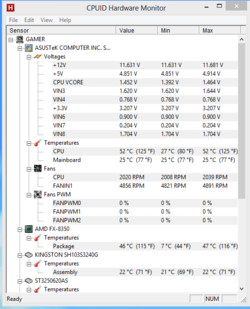- Joined
- Dec 19, 2012
Nice work Trents  That should keep things cool.
That should keep things cool.
Going off of what you said yesterday

@RGone you say this isn't what LLC was designed to do but I think it's pretty awesome. I had a gaming session after this and the Vcore topped just shy of 1.44v. In the end I think this might be my new permanent setting. You get the power when you need it and less when you don't
 That should keep things cool.
That should keep things cool.Going off of what you said yesterday
I got messing around and found that if I kept lowering the Vcore the extreme setting on the PLL would kick it up higher. The max offset I got was 0.72v. This was on my Sabretooth. If you're curious I could give it a go on the PRO with the 965 to see if I get the same results.The M5A97 nonevo had a spread of >.75v. So I could set it at 1.425 in bios for every day computing but it would surge to over 1.5v under heavy load. The new board I have to set to 1.5 in bios and it stays steady at that with whatever vdrop compensation LLC is implementing under light computing. Under heavy load it will only go to 1.512v (right now I'm Priming with the 960T unlocked to 6 cores at a little over 4 ghz clock speed). This is with the Ultra High LLC setting.

@RGone you say this isn't what LLC was designed to do but I think it's pretty awesome. I had a gaming session after this and the Vcore topped just shy of 1.44v. In the end I think this might be my new permanent setting. You get the power when you need it and less when you don't

 OOPs ya it was early when I posted that.
OOPs ya it was early when I posted that.

